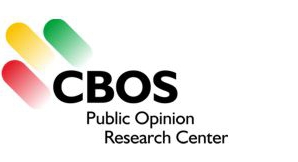18/2020
2020-06-26
Assessment of the Rate at which Pandemic Restrictions Are Being Lifted
In the judgement of close to half the people surveyed (48%) the government is easing rules and restrictions at an appropriate rate. Of the remainder, more think that restrictions are being lifted too quickly (31%) than too slowly (12%).

|
The most positive assessment of the rate at which pandemic restrictions are being lifted comes from Law and Justice (PiS) voters, who for the most part (70%) assess the tempo as appropriate to the situation. Within the electorates of other parties this issue is decidedly more controversial. Many of the supporters of The Left (Lewica) (57%), Civic Coalition (KO) (48%) and the Polish People’s Party – Polish Coalition (39%) think the rules are being eased too quickly. On the other hand, Confederation Liberty and Independence (Konfederacja) voters are the only ones who more often judge the rate of easing as too slow (34%) rather than too fast (24%).
More on this subject in the CBOS report.
This ‘Current Events and Problems’ survey (359) was conducted using a mixed-mode procedure on a representative sample of named adult residents of Poland, randomly selected from the National Identity Number (PESEL) register.
Respondents independently selected one of the following methods:
– Computer Assisted Personal Interview (CAPI);
– Computer Assisted Telephone Interview (CATI), respondents receiving researchers’ telephone numbers in an introductory letter from CBOS;
– Computer Assisted Web Interview (CAWI), where respondents filled in the online questionnaire independently, gaining access by means of a login and password provided in an introductory letter from CBOS.
– Computer Assisted Personal Interview (CAPI);
– Computer Assisted Telephone Interview (CATI), respondents receiving researchers’ telephone numbers in an introductory letter from CBOS;
– Computer Assisted Web Interview (CAWI), where respondents filled in the online questionnaire independently, gaining access by means of a login and password provided in an introductory letter from CBOS.
In all three cases the questionnaire had the same structure and comprised the same questions. The survey was carried out between 22 May and 4 June 2020 inclusive on a sample of 1308 people (61.6% using the CAPI method, 24.4% CATI and 14% CAWI).





